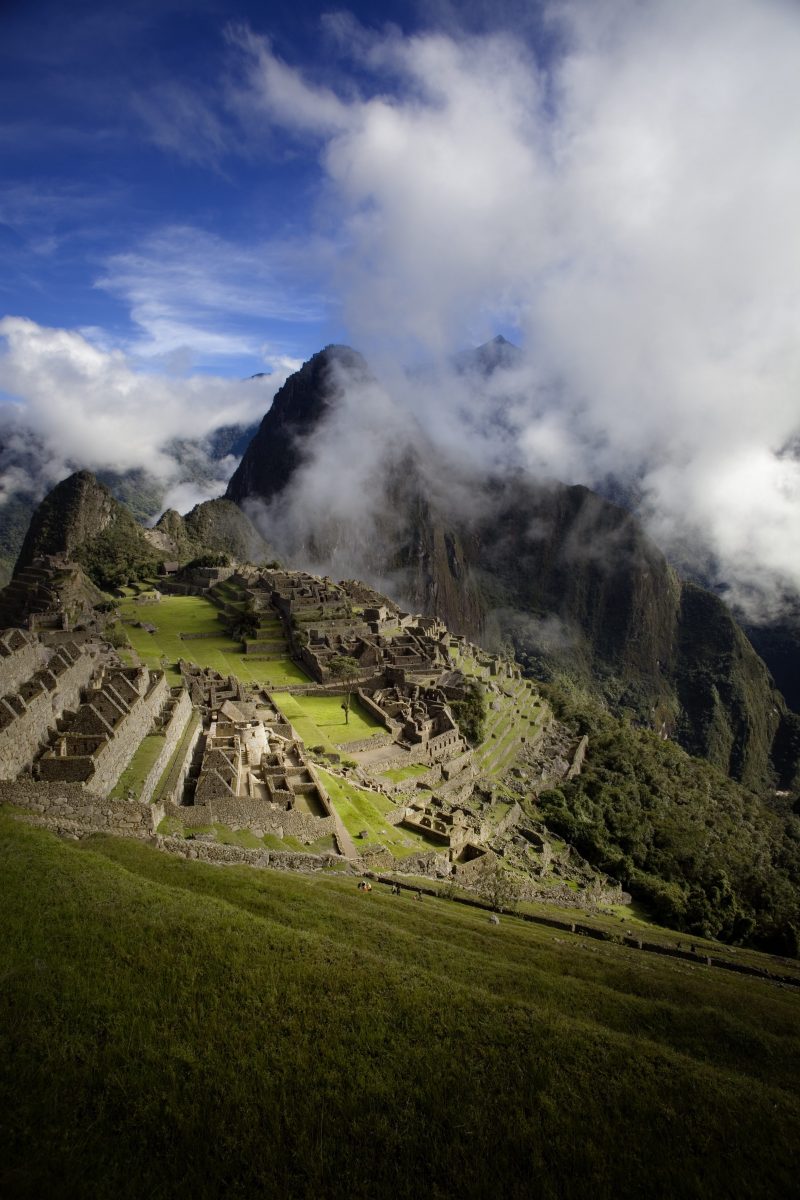EDITOR’S NOTE: THIS PIECE IS PART OF A SERIES EXPLORING THE SUSTAINABLE DEVELOPMENT GOALS. SEE THE INTRODUCTION TO THE SERIES HERE.
From coastal deserts to Amazonian rainforests to Andean highlands, Peru is one of the world’s most ecologically diverse countries.
It is also vulnerable to climate change.
Extreme weather events like El Niño and La Niña have triggered bitter cold waves, frost, drought, floods, and landslides. The country’s tropical glaciers—Peru has one of the largest concentrations in the world—have shrunk considerably over the last four decades, affecting everything from agriculture and food security to drinking water and energy supplies.
The government of Peru is working to ensure that priority sectors are able to cope with and adapt to the effects of climate change.
It collaborated with the Food and Agriculture Organization of the United Nations (FAO), through a Technical Cooperation Programme (TCP) project, to develop a climate change adaptation and disaster risk management plan specifically for the agriculture sector.
The Plan de Gestión de Riesgos y Adaptación al Cambio Climático en el Sector Agrario (Plan of Risk Management and Adaptation to Climate Change in the Agrarian Sector), known as PLANGRACC-A, is scheduled to run until 2021. It seeks to channel funding for diverse projects across the entire country that will help reduce agricultural risks and build farmers’ resilience to extreme weather.
Threats to food security
More than seven million people in Peru grow crops and raise livestock for their food and income. Many are staple food producers who live in the country’s most vulnerable ecosystems, like southern Peru’s high Andean range.
Changing weather patterns and degraded natural resources have damaged harvests and dented yields over the years, leaving rural communities more vulnerable to hunger and poverty and threatening national food security.

In photo: The Andes are home to some of Peru’s most vulnerable ecosystems.
The Government of Peru adopted a law in 2011 to create a national disaster risk management system, but “the law and its implementation are unknown in some of the country’s regions,” said Griselle Vega, the TCP’s National Project Coordinator.
“Most people in the regions look at the issue of risk management in terms of emergency response,” she added. “They don’t discuss it from the standpoint of prevention in the medium- or long-term.”
Related article: “STRENGTHENING OF CHINA’S CAPACITY IN AGRICULTURAL MARKET MONITORING AND AGRICULTURAL OUTLOOK“
Mapping vulnerability and risks
Through the TCP, FAO worked closely with Peru’s government, Ministry of Agriculture and Directorate General for Environmental and Rural Affairs. The Ministry of the Environment for Adaptation to Climate Change and the National Centre for Disaster Risk Reduction also contributed to the PLANGRACC-A.
During the planning and diagnostic phase, the project team sought to raise awareness on the importance of climate change adaptation and disaster risk management throughout Peru’s 24 regions.
Participatory workshops in each region brought together people working in agriculture and the environment, including representatives from regional government, grassroots organizations, and civil society, to share knowledge and best practices, validate information and determine priority actions.
The TCP assessed the impact of climate variability on Peru’s 12 most important crops, four main livestock species, and three main grasses. It also supported mapping on social, productive, and economic vulnerability, identifying frost, drought, floods, and cold spells as the four hazards with the biggest impact on agricultural production, food security and nutrition in Peru.
All of this information fed into the design of 159 project proposals—150 regional projects and nine national ones. These projects fall under one of five strategic areas: research and information; emergency response; risk reduction and prevention; planning; and local capacity development.
Tailored projects
The projects were tailored to address specific climate risks in each of the country’s 24 regions. For example, extended cold spells kill thousands of llamas and other livestock every year in the country’s Altiplano. Therefore, some of the proposed projects focused on building storm shelters for the animals and their feed.
Other projects focused on protecting watersheds. “Those living in the highlands play a crucial role in managing natural resources sustainably and reducing disaster risks for the rest of the country,” said Tomás Lindemann, an FAO institutions and Climate Change Officer and the TCP’s Lead Technical Officer.
“They are the ones who protect the upper portion of the mountains where the origin of disasters really arise,” he said. “Whatever you do upstream manifests itself downstream. So when the terraces and watersheds are duly protected, they prevent things from happening downstream, like flooding.”
“The watersheds also guarantee a steady supply of humidity and fertility to the soil, and regulate the flow of water into the rivers,” he added.
For a full mindmap containing additional related articles and photos, visit #SDGStories
Catalytic effect
The TCP played a strategic role in generating greater awareness and commitment in Peru. It helped strengthen capacities within the Ministry of Agriculture and regional governments to plan projects that would reduce climate risks affecting agriculture.
“Agriculture is the first and so far only sector in Peru to put in place such a plan,” said Vega.
The Ministry of Production is looking to put together a like-minded plan for the fishing sector, while the governments in Colombia and Nicaragua have expressed interest in developing similar strategies for their agriculture sectors.
Peru’s national strategy on food security and nutrition, which runs from 2013 to 2021, is now looking closely at the relationship between disaster risk management in agriculture and food security.
In addition, the government of Japan is carrying out a USD 1.7 million project analyzing the long-term impact of climate change on food security in Peru and the Philippines, two disaster-prone countries. The project complements Peru’s PLANGRACC-A, drawing on the TCP’s methodology, particularly the participatory design of projects and vulnerability and risk mapping. The objective is to strengthen the capacity of the government and experts to continue generating robust scientific information that can inform policy-makers.
Most people in the regions look at the issue of risk management in terms of emergency response. They don’t discuss it from the standpoint of prevention in the medium- or long-term.
Managing natural resources for future generations
Addressing poverty and natural resource degradation in Peru, especially glacier melt, is not only crucial for the country, but also for the rest of South America, said Lindemann.
“Most people are aware of the looming disaster in the Amazon, and attribute it to the chopping down of trees,” he said. “But the supply of water is as equally important.”
“It’s sometimes difficult for people living in Lima or Brasilia or Buenos Aires to understand that when they open the taps in their homes, they are letting water flow in from snow-capped mountains 10 000 km away,” he added. “The connection between the Andean range and the Amazon is extremely important.”
Recommended reading: “SDG 15: PLANTING ROOTS FOR A FERTILE PLANET“
_ _
Featured Image Credit: United Nations Media Archive
FAO’s TCP projects are targeted, short-term catalytic projects that leverage FAO’s technical expertise to address specific problems in agriculture, fisheries, forestry and rural livelihoods among FAO member countries, producing tangible and immediate results in a cost-effective manner.
Authors:
Christine Chaperon, Programme Coordinator, Technical Cooperation, FAO
John Preissing, FAO Representative in Peru
Tomas Lindemann, Natural Resources Officer, FAO














